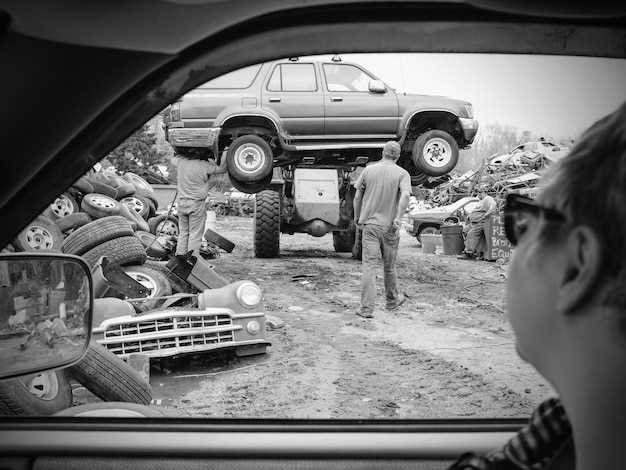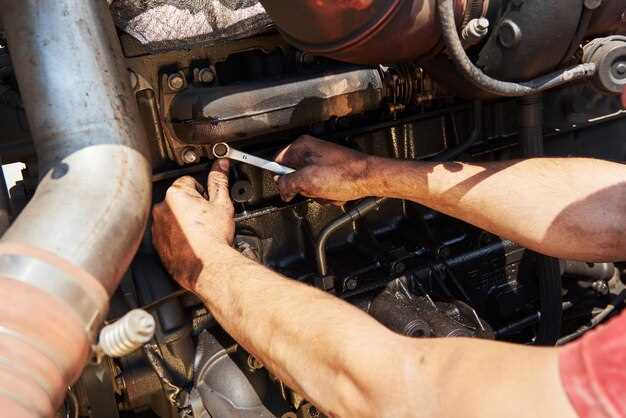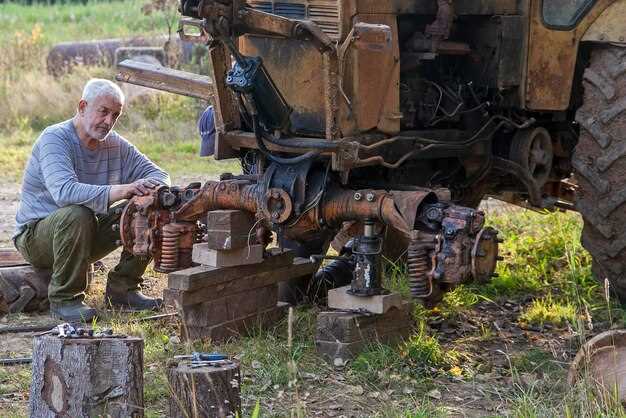
Creating your own pre-runner truck is an exciting and rewarding diy project that offers unparalleled customization and performance. Whether you’re an experienced mechanic or a beginner eager to learn, this guide will walk you through the essential steps involved in building a pre-runner from scratch.
Starting with a solid understanding of the necessary components, you’ll learn how to select a suitable chassis, suspension system, and engine that meets your off-road needs. Each element is critical to achieving the desired balance of strength, speed, and agility, making it imperative to choose wisely and assemble with care.
Throughout this article, we’ll cover crucial aspects such as the selection of parts, frame modifications, and the installation of specialized equipment. By the end of this comprehensive guide, you will have the knowledge to confidently design and construct a pre-runner truck that can tackle the toughest terrains while showcasing your personal flair.
Choosing the Right Base Vehicle for Your Pre-Runner Build

When embarking on a pre-runner build, selecting the right base vehicle is crucial for achieving the performance and reliability needed for off-road adventures. The base vehicle serves as the foundation for modifications, so careful consideration must be given to its capabilities and characteristics.
First, consider the vehicle’s drivetrain. A good pre-runner typically requires a robust four-wheel-drive (4WD) system. However, this can also depend on your driving style and terrain. Vehicles with a solid axle configuration in the front tend to offer better handling and stability during high-speed runs over rough terrain.
Next, look at the frame and suspension architecture. A strong and lightweight chassis is essential for a pre-runner build. Models such as the Ford Ranger and Chevrolet S-10 are popular choices because their frames can handle extensive modifications. Additionally, a vehicle with existing aftermarket support for suspension upgrades simplifies the build process and improves performance.
Engine size and performance are also significant factors. A vehicle equipped with a powerful engine can provide the necessary torque and horsepower for tackling tough trails. Consider options like the Toyota Tacoma or Nissan Frontier, both known for their durability and aftermarket options.
Another important aspect is the weight of the vehicle. A lighter build allows for better handling and acceleration. Pay attention to the material on the vehicle’s body; materials such as aluminum can significantly reduce weight without sacrificing strength.
Finally, evaluate the vehicle’s accessibility to spare parts and aftermarket components. The easier it is to source parts, the simpler your pre-runner build will be. Models with a large community and readily available parts can save you time and money in the long run.
In summary, choosing the right base vehicle for your pre-runner build involves assessing the drivetrain, chassis strength, engine performance, weight considerations, and parts availability. By focusing on these core attributes, you increase the likelihood of a successful and enjoyable build that meets your off-road ambitions.
Essential Modifications for Suspension and Tires in Pre-Runner Trucks
Building a pre-runner truck involves making specific modifications to the suspension and tires to enhance performance and durability on rough terrains. The right upgrades can significantly improve handling, stability, and comfort during off-road adventures.
Suspension Modifications: The first step in building a capable pre-runner truck is upgrading the suspension system. Consider installing long-travel suspension kits. These kits increase suspension travel, allowing more flexibility and control over uneven surfaces. Look for options with adjustable coilovers, which can be tuned to accommodate different weight loads and driving conditions.
Additionally, replacing stock shocks with high-performance bypass shocks is crucial. These shocks provide better damping characteristics and allow you to fine-tune the ride quality. Pay attention to the geometry of the suspension arms and ensure they are designed for off-road use. Strengthened control arms and radius arms can handle the increased stress while maintaining proper alignment.
Tire Selection: Choosing the right tires is as vital as suspension upgrades. Opt for wide tires with aggressive tread patterns that enhance traction on loose surfaces like sand and gravel. A popular choice is the all-terrain or mud-terrain tires, which balance off-road capability and on-road comfort.
Make sure the tires have an appropriate diameter to match the lifted suspension. Larger tires can improve ground clearance and approach angles, reducing the risk of underbody damage. However, they also require careful consideration of gear ratios to maintain optimal acceleration and fuel efficiency.
Wheel Compatibility: When building a pre-runner, ensure that your wheels are compatible with the new tires and suspension. Lighter wheels can reduce unsprung weight, improving handling and ride quality. Look for beadlock wheels if you plan to run lower tire pressures for better traction, as they prevent the tire from slipping off the rim.
In summary, essential modifications for the suspension and tires in pre-runner trucks play a critical role in their performance. Investing in high-quality components tailored for off-road conditions will provide durability and enhance your vehicle’s ability to tackle challenging terrains effectively.
Wiring and Installing Performance Components for Off-Road Capability

When building a DIY pre-runner truck, upgrading the wiring and installing performance components is crucial for enhancing off-road capability. Proper wiring ensures reliability and performance, while the right components can significantly improve your vehicle’s handling and power.
Start by assessing your truck’s existing electrical system. It’s essential to have a solid foundation for any modifications. Upgrade to a higher amp alternator if you plan to add lights or other electronics. Ensure that your battery is capable of supporting these upgrades, as off-road conditions can drain power quickly.
Next, focus on wiring for auxiliary components like lights and winches. Utilize high-quality, weather-resistant wiring harnesses to prevent corrosion and ensure durability. Consider relays for high-draw components, as this will protect your switches and extend their lifespan. Fuse all circuits to avoid electrical failures that could leave you stranded in the wild.
When it comes to performance components, prioritize upgrades that enhance your vehicle’s off-road readiness. Installing a performance exhaust system can improve engine efficiency, while a quality intake system can increase airflow and horsepower. These components work together to provide better throttle response and torque.
Shocks and suspension upgrades are vital for off-road performance. Install extended-travel shocks to absorb rough terrain and maintain control over obstacles. Consider adjustable coilovers to suit different terrains, allowing for adjustments based on your off-road adventure.
Lastly, don’t overlook the importance of off-road tires. Choose tires designed for traction and durability in various off-road conditions. Properly aligning your truck after suspension changes is essential to ensure even tire wear and optimal handling.
In summary, wiring and installing performance components for your DIY pre-runner will greatly enhance its off-road capability. Focus on reliable electrical systems and choose high-quality components to build a truck that can tackle any challenge off the beaten path.




